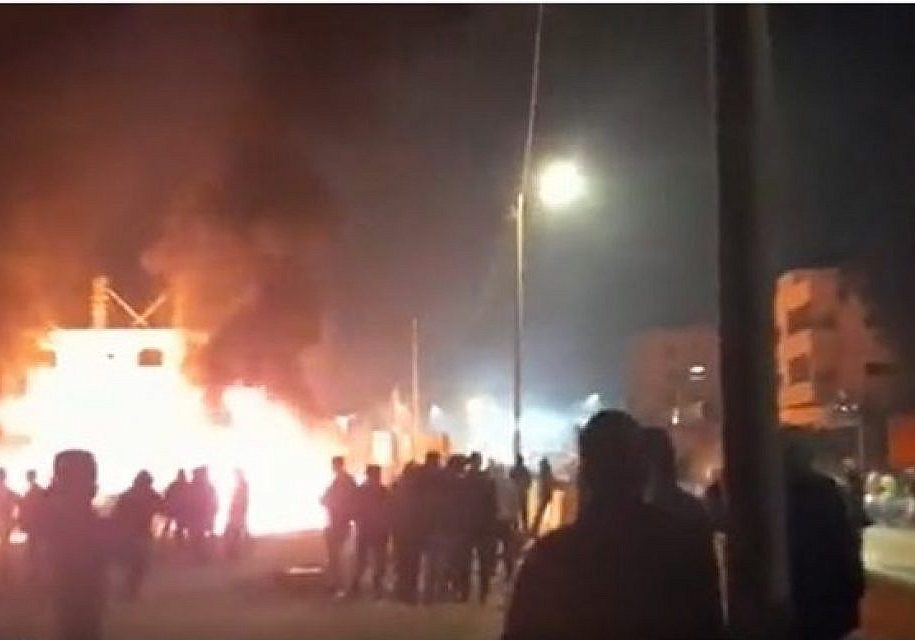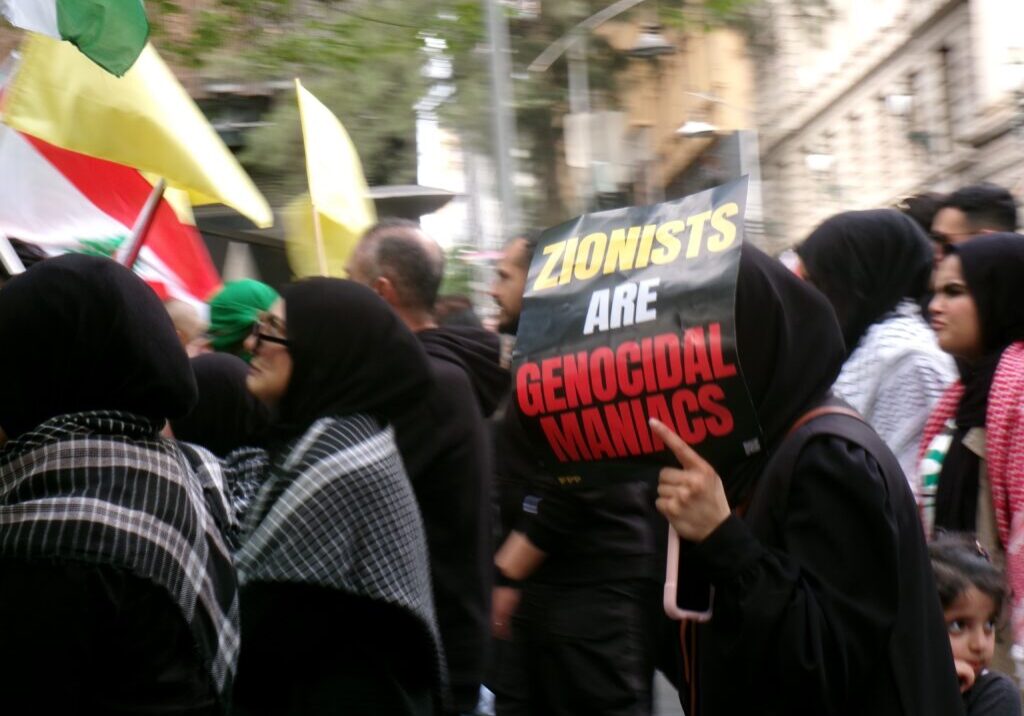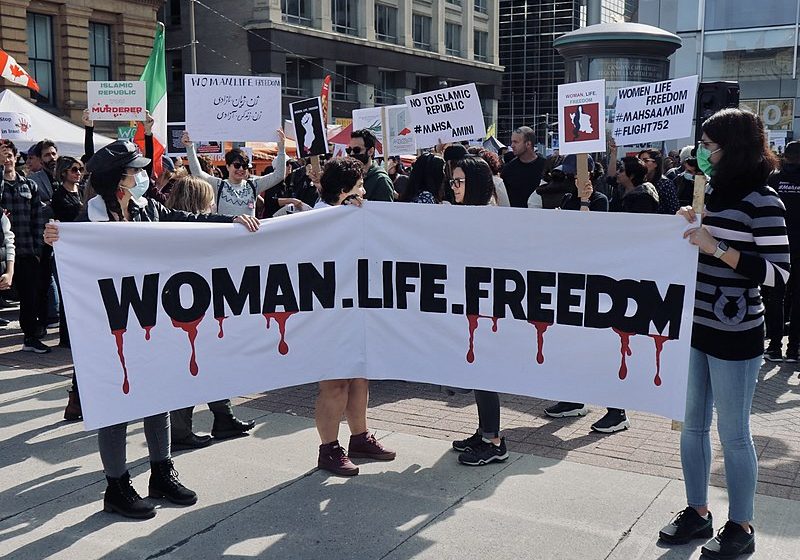Australia/Israel Review, Featured
Editorial: Atrocities demand Hamas’ rule must end now
Oct 31, 2023 | Colin Rubenstein

Hamas’ savage rampage of slaughter, pillage, rape, torture and murder on October 7 – which wiped out more than 1,400 people from 22 civilian communities and led to the kidnapping of 220 more – horrified and shocked all civilised people around the world. However, on a certain level, you cannot call it truly surprising. Anyone who has looked at Hamas’ ideology and record – as we at AIJAC have – would know that it was morally capable of the unmitigated evil we saw on October 7.
That day put paid, once and for all, to the lie being peddled by some that Hamas has somehow moderated over the years. Today’s Hamas looks just like the old Hamas – only better-armed and organised, thanks largely to considerable Iranian assistance with arms, training and funds.
Lest we forget, this is the group that dispatched waves of suicide bombers into Israeli cities for the decade following the 1993 Oslo Accords, killing hundreds of innocent people on public transport and at bus stops, in restaurants, cafes, bars, nightclubs, and shops.
Since the mid-2000s, Hamas has committed tens of thousands of individual war crimes by launching explosive-laden rockets into Israeli towns and villages – aiming to kill civilians. At the cost of untold millions of dollars, Hamas dug hundreds of kilometres of concrete-lined tunnels under Gaza, as well as into Israel to facilitate mass terrorist infiltrations – until the latter plan was foiled by the IDF’s Operation Protective Edge in 2014.
Yet it managed to achieve the same goal at ground level on October 7 by disabling Israeli observation cameras and sensors with drones, perforating Israel’s security fence with explosives and bulldozers, and sending heavily armed squads across the border en masse with orders to murder everyone they could find in Israeli towns and villages, except for a few hostages brought back as bargaining chips. Many of those murdered – men, women, children, babies, the elderly – were tortured first, or burned alive.
This traumatic event has been described as Israel’s September 11. In reality, it was far worse. An Israeli was proportionally 25 times more likely to have been killed on October 7 than an American was on September 11. There is hardly a family in Israel not directly or indirectly impacted by what happened on that Saturday.
An Israeli State Commission of Inquiry into how this horror happened is inevitable, but we can already say that October 7 was the single most catastrophic military and intelligence failure in Israel’s history.
Some pundits are insisting that it was the lack of a Palestinian state alongside Israel that fuelled Hamas’ Islamist ideology, and thus led to this attack. This is completely upside down – this attack was the clearest demonstration possible as to why it has proven impossible to create a two-state resolution up to now, despite sincere efforts and repeated Israeli two-state peace offers.
Hamas-run Gaza has for the last 17 years been the closest thing to a fully-fledged Palestinian state that has ever existed – totally autonomous, sharing a border with not only Israel and Egypt, but the Mediterranean, and completely free of any Israeli presence.
Yet it is precisely in Gaza where terrorism flourished, where forces constantly developed and fired rockets at Israeli civilian towns and trained thousands of armed operatives for barbaric mass terror attacks like the one the world witnessed on October 7. Independent Gaza, ruled by Hamas, was not only a mortal threat to the lives of Israel’s citizens, it developed into an existential threat to Israel’s national existence, and Hamas also made the lives of Gaza’s residents a misery by stealing aid and initiating constant conflict. This is what necessitated Israel’s blockade of Gaza to try to control the entry of arms and military equipment – obviously with limited success.
Imagine duplicating the Gaza situation in the West Bank – where the “Green Line” armistice line with Israel is more than six times longer than Israel’s Gaza’s border, much more mountainous and convoluted, and is immediately adjacent to all of Israel’s main population centres. A majority of Israelis would be under constant threat of a repeat of what happened to the residents of the towns near Gaza. The threat would be exponentially greater than the already extreme threat from Gaza.
The only reason the West Bank poses no similar threat today is because there are Israeli troops there to stop such a situation developing.
Those who imagine that forcing an Israeli pullback to the 1967 lines would satisfy Palestinian demands and thus bring peace are being wilfully blind. Not only was Gaza not “occupied” when Hamas took it over and made it into a dedicated terror statelet, Hamas is absolutely clear that similar “armed resistance” would continue even if Israel were to give up every inch of the West Bank.
The increasingly weak Palestinian Authority (PA) which rules the West Bank is not much better as a candidate to run a future Palestinian state existing in peace alongside Israel. In the aftermath of October 7, the PA cheered on the Hamas slaughter and spread antisemitism – and it subsidises terrorists with its “pay for slay” program.
Despite the terrible events of recent weeks, AIJAC and the entire Australian Jewish community have been reassured and heartened by the bipartisan outpouring of support for Israel and Jews, at home and abroad, from Prime Minister Anthony Albanese, Opposition Leader Peter Dutton and many other federal and state lawmakers.
Yet important as those supportive messages were in the immediate aftermath of the massacre, it’s even more important they continue. Such support is needed not only to pressure Hamas to free the hostages, but also to allow Israel to complete what will likely be a long, complex and bloody military campaign to remove the Hamas threat from Gaza – where the terror group has long illegally hidden its military assets in civilian neighbourhoods, homes, schools, mosques, and hospitals, or in the huge network of tunnels it built underneath them. Moreover, this operation could easily become a multi-front war if the Iranian-backed Hezbollah further escalates along Israel’s northern border.
It is a very dark time – but the only hope to advance to a better one is for the rule of Gaza by bloodthirsty, Iranian-supported Hamas terrorists to be dismantled. Australia’s long-standing bipartisan goal of helping achieve a two-state Israeli-Palestinian peace is simply inconceivable without this being achieved. We hope that Australia’s political leaders will keep this in mind in the difficult weeks to come.






